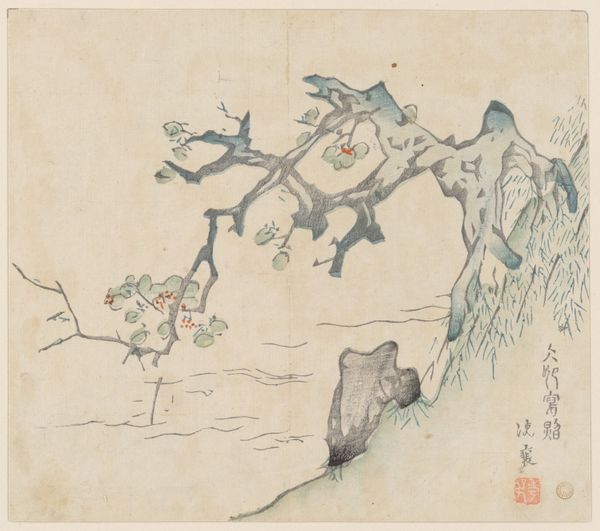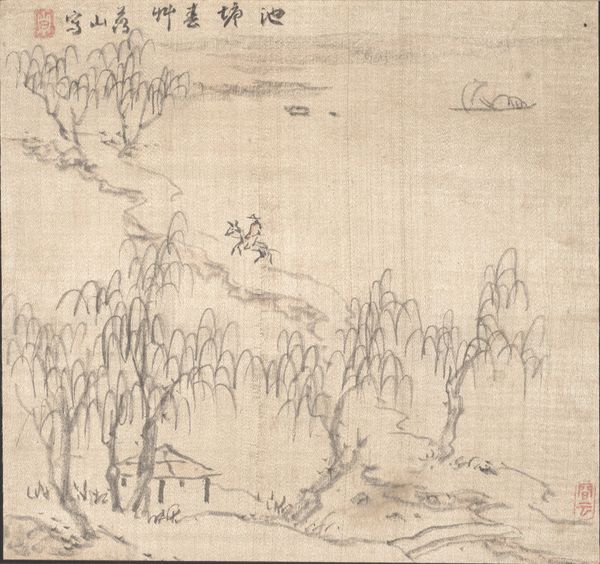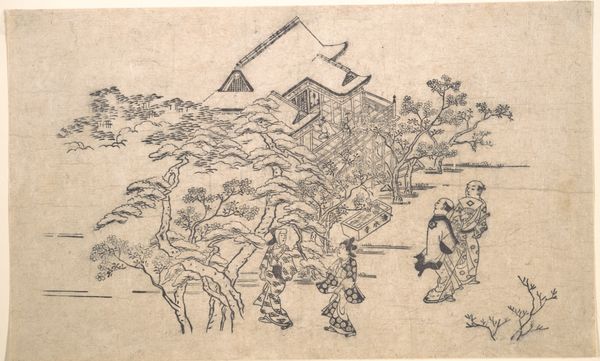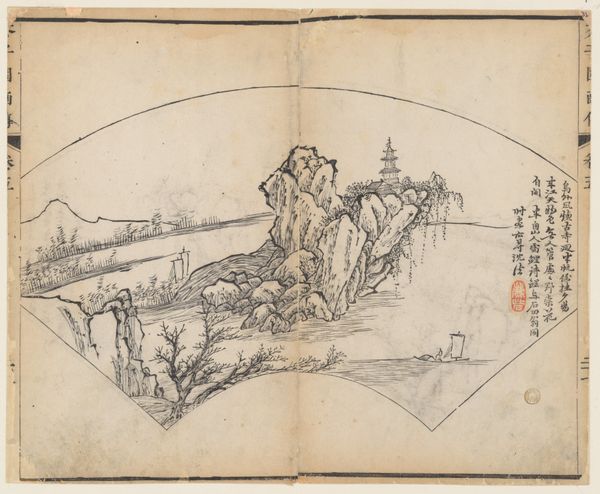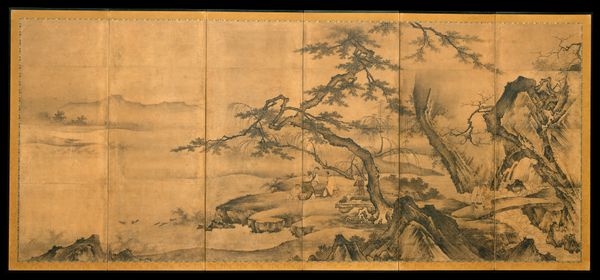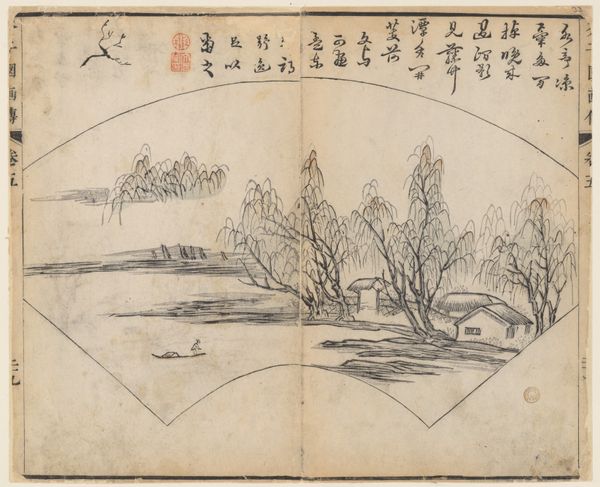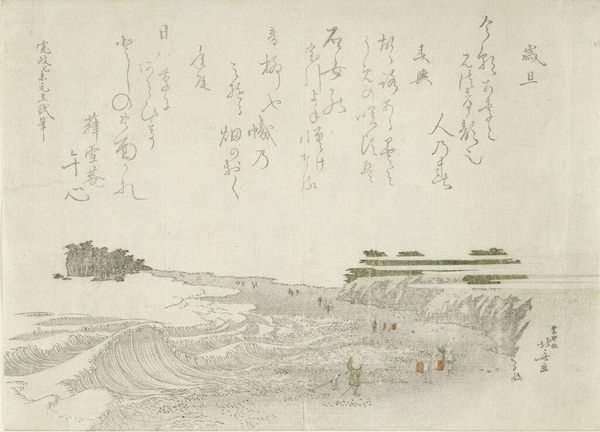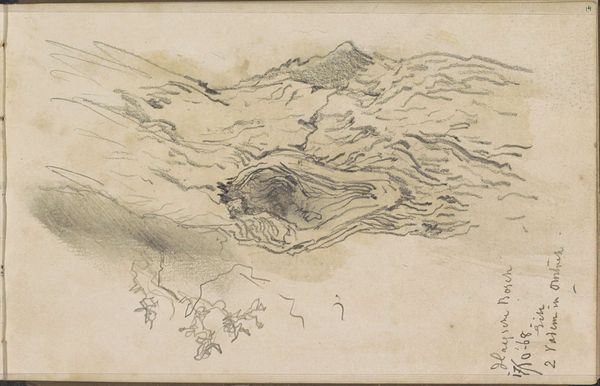
Dimensions overall: 13.1 x 24 cm (5 3/16 x 9 7/16 in.)
Curator: This ink and pencil drawing on paper, titled "The Serpentine, London," dates from around 1920, created by Walter Richard Sickert. The sketch, crisscrossed by a grid, depicts a placid scene along the Serpentine lake. Editor: There's a compelling sparseness to it, isn't there? A deliberate choice to distill the landscape to its basic structural forms. That grid almost lends the drawing a mathematical feel, yet it remains evocative of the tranquil park scene. Curator: Absolutely. The grid, a recurring feature in Sickert's work, provides an understructure that informs the composition's spatial arrangement. We see the park chairs in the foreground, a figure standing at the shoreline, and a screen of dense foliage in the background. How does this framework dictate our reading? Editor: It creates a structured approach to rendering this everyday urban setting, turning it almost into an architectural study. The eye moves systematically across the plane as the viewer navigates each square. Also, you can tell Sickert worked on paper. There is no hiding the hand here! Curator: Exactly, one may argue the lack of complete opacity and precision speaks to Sickert’s fascination with capturing the fleeting essence of modern life, similar to his contemporaries among the Impressionists. It challenges the academic traditions by emphasizing immediacy. Editor: The drawing’s formal construction and quiet intensity speak to the modern need for calculated rest. The image seems both peaceful and reserved. It reminds us of the importance that public space holds in creating a social landscape for people living in urban contexts. Curator: Well said! It brings together the constructedness of an urban park with the seeming disorder of a sketched natural environment. There is the beauty of it as Sickert invites us to see the subtle complexities and the geometric patterns in the landscape before us. Editor: Yes, indeed! He reveals order that provides the foundation for an everyday sense of urban life. A fascinating study in form and meaning!
Comments
No comments
Be the first to comment and join the conversation on the ultimate creative platform.


